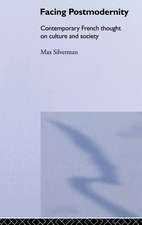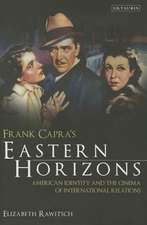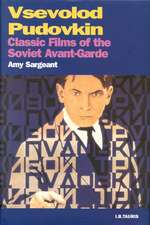Concentrationary Imaginaries: Tracing Totalitarian Violence in Popular Culture: New Encounters: Arts, Cultures, Concepts
Editat de Griselda Pollock, Max Silvermanen Limba Engleză Paperback – 8 sep 2021
| Toate formatele și edițiile | Preț | Express |
|---|---|---|
| Paperback (1) | 186.22 lei 3-5 săpt. | |
| Bloomsbury Publishing – 8 sep 2021 | 186.22 lei 3-5 săpt. | |
| Hardback (1) | 779.50 lei 3-5 săpt. | |
| Bloomsbury Publishing – 24 aug 2015 | 779.50 lei 3-5 săpt. |
Preț: 186.22 lei
Preț vechi: 212.16 lei
-12% Nou
Puncte Express: 279
Preț estimativ în valută:
35.63€ • 37.20$ • 29.49£
35.63€ • 37.20$ • 29.49£
Carte disponibilă
Livrare economică 14-28 martie
Preluare comenzi: 021 569.72.76
Specificații
ISBN-13: 9781350229556
ISBN-10: 1350229555
Pagini: 330
Ilustrații: 49 bw illus
Dimensiuni: 156 x 234 x 30 mm
Greutate: 0.73 kg
Editura: Bloomsbury Publishing
Colecția Bloomsbury Visual Arts
Seria New Encounters: Arts, Cultures, Concepts
Locul publicării:London, United Kingdom
ISBN-10: 1350229555
Pagini: 330
Ilustrații: 49 bw illus
Dimensiuni: 156 x 234 x 30 mm
Greutate: 0.73 kg
Editura: Bloomsbury Publishing
Colecția Bloomsbury Visual Arts
Seria New Encounters: Arts, Cultures, Concepts
Locul publicării:London, United Kingdom
Caracteristici
Draws on the political philosophy of Hannah Arendt and the analyses of violence by Agamben, Virilio, Lacoue-Labarthe and Nancy
Notă biografică
Griselda Pollock is Professor of Social and Critical Histories of Art and Director of the Centre for Cultural Analysis, Theory and History at the University of Leeds. Her publications include Visual Politics of Psychoanalysis: Art and the Image in Post-Traumatic Cultures (2013). Pollock is Series Editor of Bloomsbury's New Encounters Series. Max Silverman is Professor of Modern French Studies at the University of Leeds. His publications include Palimpsestic Memory: the Holocaust and Colonialism in French and Francophone Fiction and Film (2013). Griselda Pollock and Max Silverman are joint authors of Concentrationary Cinema: Aesthetics as Political Resistance in Alain Resnais's 'Night and Fog', which won the Kraszna-Krausz Award for Best Book on the Moving Image, 2011. They are also joint editors of Concentrationary Memories: Totalitarian Terror and Cultural Resistance, the first of three volumes on the Concentrationary in New Encounters Series, of which Concentrationary Imaginaries is the second to be published.
Cuprins
List of IllustrationsAcknowledgementsSeries Preface: Concentrationary Memories: The Politics of Representation, Griselda Pollock and Max SilvermanIntroductionA Concentrationary Imaginary?, Griselda Pollock Part I. Thinking1. Framing Horror, Adriana Cavarero 2. Between Realism and Fiction: Arendt and Levi on Concentrationary Imaginaries, Olivia Guaraldo 3. Totality, Convergence, Synchronization, Ian James Part II. Desire4. Wrap me up in Sadist Knots: Representations of Sadism-From Naziploitation to Torture Porn, Aaron Kerner 5. Redemption or Transformation: Blasphemy and the Concentrationary Imaginary in Liliana Cavani's The Night Porter (1974), Griselda Pollock Part III. Camp6. Seep and Creep: the Concentrationary Imaginary in Martin Scorsese's Shutter Island (2010), Benjamin Hannavy Cousen7. Haneke and the Camps, Max Silverman 8. Spec(tac)ularizing 'Campness': Nikita and La Femme Nikita the Series, Brenda Hollweg NotesBibliographyNotes on ContributorsIndex






























